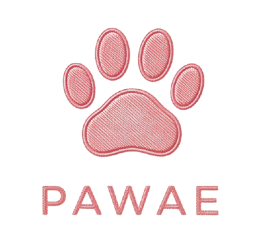Embroidery is more than just a decorative art—it’s a universal language stitched into fabric. For centuries, cultures around the world have used embroidery to communicate identity, beliefs, values, and stories. Behind each flower, shape, or stitch lies rich symbolism passed down through generations.
In today’s fashion, embroidery continues to be celebrated for both its beauty and meaning. Whether you’re wearing a hand-embroidered shirt or designing a custom piece, understanding the symbolism behind embroidery patterns adds depth to the design. Let’s explore the meaning behind some of the most popular embroidery symbols and motifs you’ll find in contemporary and traditional clothing.
1. Floral Embroidery: Beauty, Growth & Emotions
Flowers are among the most common and beloved embroidery motifs. But each flower carries a unique meaning:
- Roses: Symbolize love, passion, and sometimes secrecy (“sub rosa”).
- Lotus: Represents spiritual awakening, purity, and rebirth—especially in Eastern cultures.
- Sunflowers: Associated with positivity, energy, and loyalty.
- Cherry Blossoms: In Japanese embroidery, they symbolize the beauty and fragility of life.
- Lavender: Signifies calmness, healing, and grace.
Floral embroidery often reflects the wearer’s mood, values, or cultural heritage.
2. Animal Motifs: Power, Spirit & Instinct
Animals in embroidery often carry symbolic meanings rooted in myth, folklore, or spirituality.
- Butterflies: Represent transformation, freedom, and beauty.
- Dragons: In Asian cultures, they symbolize strength, good fortune, and protection.
- Birds (like cranes, doves, or swallows): Often stand for peace, love, and travel.
- Tigers and Lions: Embody courage, authority, and protection.
- Owls: Symbolize wisdom, intuition, and mystery.
These animal symbols are often embroidered as protective charms or as expressions of inner power.
3. Geometric Patterns: Harmony, Balance & Tradition
Geometric embroidery patterns are deeply rooted in many cultures and carry both aesthetic and symbolic weight.
- Circles: Represent unity, infinity, and wholeness.
- Triangles: Can symbolize strength, direction, or the connection between body, mind, and spirit.
- Diamonds: Often mean clarity, vision, or fertility in folk traditions.
- Stars: Symbolize hope, guidance, and divine protection.
These patterns are frequently used in traditional folk embroidery, such as Eastern European or Indigenous designs.
4. Spiritual and Mystical Symbols
Certain embroidered motifs hold religious or spiritual significance across various cultures.
- Mandala patterns: Represent the universe, inner balance, and meditation in Buddhist and Hindu symbolism.
- Evil Eye: A protective symbol embroidered in many Middle Eastern and Mediterranean cultures to ward off negativity.
- Crosses or Christian symbols: Represent faith, hope, and blessings.
- Yin-Yang: Embroidered in Asian designs, symbolizing duality and balance.
Such patterns are more than decorative—they offer spiritual meaning and personal protection.
5. Cultural Heritage and Tribal Symbols
Embroidery is a powerful medium for preserving culture. Many ethnic groups use specific motifs to tell stories of ancestry, survival, or identity.
- Hmong embroidery (Paj Ntaub): Uses colorful, intricate symbols to pass down folklore, including animals, plants, and mazes.
- Mexican Otomi embroidery: Features stylized animals and plants, symbolizing nature and the cycle of life.
- Ukrainian Vyshyvanka: Each region has its own embroidery patterns representing family roots, protection, and connection to land.
- Berber symbols (Morocco): Often geometric, these motifs carry tribal messages about fertility, life, and spirituality.
When these patterns appear in modern fashion, they bring history and cultural storytelling to the global stage.
6. Words and Script Embroidery
In recent years, embroidered typography has gained popularity. Words, quotes, and affirmations stitched onto shirts and jackets hold emotional meaning:
- Names or initials: Signify ownership, self-love, or connection to a loved one.
- Inspirational quotes: Encourage positivity, such as “Stay Strong” or “Keep Dreaming.”
- Mantras: Short affirmations like “Breathe” or “Gratitude” add mindfulness to fashion.
- Dates: Personal milestones like birthdays or anniversaries.
Embroidering words blends fashion with identity and intention.
7. Celestial Symbols: Stars, Moons & Suns
Celestial motifs have universal appeal and are often tied to dreams, destiny, and guidance.
- The Moon: Associated with femininity, intuition, and change.
- The Sun: Represents vitality, strength, and new beginnings.
- Stars: Often symbolize hope, destiny, or a wish for protection.
Designers are using metallic threads to highlight celestial motifs for a magical, dreamy effect.
8. Folk and Fantasy-Inspired Symbols
Thanks to fantasy influences and folklore revival, more designers are incorporating mythical creatures and folklore symbols:
- Unicorns: Symbolize purity, fantasy, and magic.
- Phoenix: A symbol of rebirth and rising from hardship.
- Mushrooms and forest scenes: Represent curiosity, nature, and the unknown.
These embroidered symbols tap into the escapism and imagination many people crave in fashion today.
Why Embroidery Symbols Matter in Modern Fashion
In a world where consumers increasingly value meaningful purchases, embroidery allows fashion to be more than superficial. Whether hand-stitched or machine-made, each embroidered symbol can:
- Tell a personal story
- Represent identity, culture, or emotion
- Offer spiritual or symbolic protection
- Help preserve traditional arts
- Promote mindfulness and intentional fashion
Understanding these meanings helps consumers make deeper connections to the garments they wear.
Conclusion
Embroidery isn’t just a design technique—it’s a storytelling tool. The patterns and symbols chosen in embroidery carry rich, often ancient, meaning. Whether it’s a flower that symbolizes love, a protective eye, or a tribal motif passed through generations, embroidery offers a way to express who we are and where we come from.
As embroidery continues to rise in popularity, learning the meaning behind these motifs can transform your fashion choices into meaningful expressions of your identity and values.
